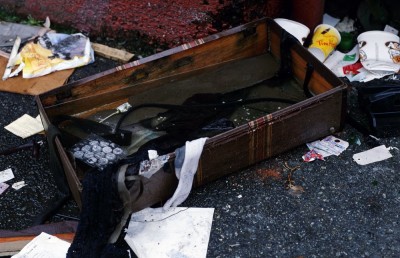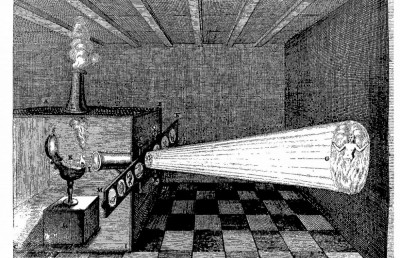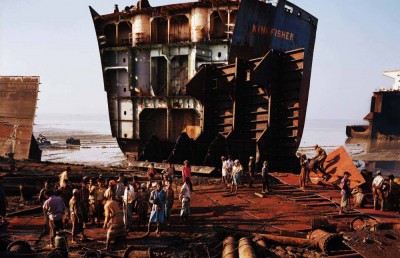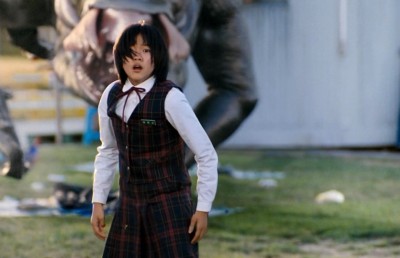Vancouver International Film Festival 2006
Dragons and Tigers Programme
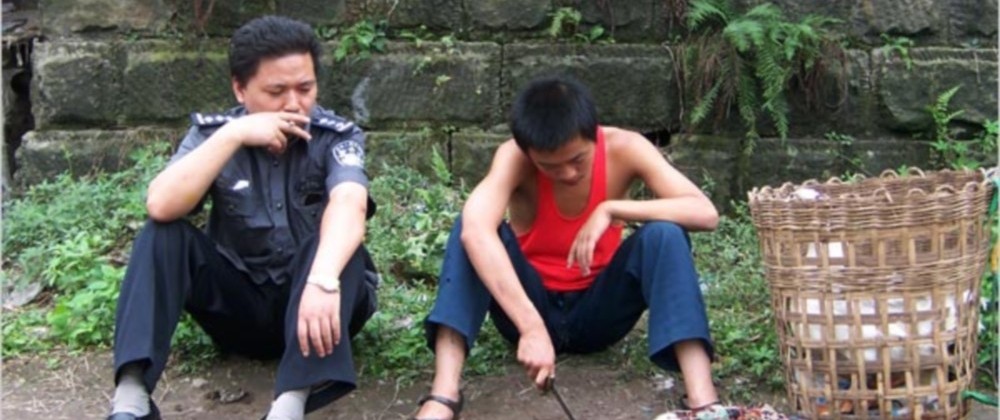
The Dragons and Tigers Programme at the Vancouver International Film Festival has long been in the forefront for the reception of East Asian cinema in the English-speaking world. Under the stewardship of programmer Tony Rayns, the section has brought many Westerners into first contact with filmmakers like Jia Zhangke, Hou Hsiao-Hsien, Tsai Ming-Liang, Apichatpong Weerasethakul and Hong Sang-Soo. As East Asia has risen to prominence in the world cinema scene in the last twenty years, many of its leading lights have had their Western debuts here in Vancouver. There is a double sadness to report this year, however: this is Rayns’ last year programming Dragons and Tigers and, unfortunately, this year’s line-up left something to be desired. The lack of quality in the featured films had several factors behind it- certain titles couldn’t be acquired, according to reports; several past masters showed signs of slipping (Tsai, Jia and Apichatpong all turned in inferior product this year); and the prevalence of amateurish and derivative “indie” fare, for starters. But I think the malaise seen at this year’s D&T event speaks to a much larger problem, one with implications that reach beyond East Asian film into the larger realm of international art cinema. The problem is one of film style.
A certain aesthetic has risen to prominence in art cinema in the last fifteen to twenty years. It’s perilous to make generalizations about a film style that each director probably views as personal when he uses it, but nonetheless I think some broad trends can be seen to have cemented. They can be crudely brought together under the umbrella term “minimalism.” The markers of this style include long, protracted takes; little reliance on montage, especially of the conventional continuity kind; minimal but pronounced sound; an avoidance of excessive dialogue; and static camera positioning or spare camera movement. Where did this aesthetic come from? In terms of antecedents, I think it’s fair to cite Antonioni, Bresson, Dreyer and Ozu, for starters. As far as I can tell from my own informal research, the style can be said to date back into the early eighties, rising to prominence in the nineties. East Asian practitioners of this general style include Hou, but also Edward Yang, Tsai, Zhang Yimou (in his early films), Apichatpong, Takeshi Kitano, and Kim Ki-Duk. Iranian cinema is dominated by the style, thanks to the overarching influence of Abbas Kiarostami. European practitioners include Michael Haneke, Claire Denis, Francois Ozon (with exceptions in his oeuvre), and Bruno Dumont. Just yesterday, it seems like, the static, minimalist aesthetic was taking international art cinema to one of its all-time peaks, evoking an intensity of focus in the viewer that was almost transcendental. Knowing how much East Asian cinema tends towards this style, I was expecting another rewarding year at the VIFF, and many of the films featured did fall within these parameters. But to my dismay, I found myself disappointed with most of them. Why? Perhaps the style has become ossified. Some critics have seen it as being a reaction against the rapid-fire, ADD-inducing montage tactics of contemporary Hollywood filmmakers, and indeed this may be the case. Writing on his blog about the fast-cutting Hollywood style, Dave Kehr spoke derisively about its art-film opposite:
The corollary is that many art films from Asia and Europe now signpost their seriousness, and set themselves apart from Hollywood product, by using extended master shots to cover scenes, with very little cutting within them. I associate this development with Hou Hsiao Hsien’s first films of the 80s, with their amazing deep focus, extended takes depicting, say, the interactions of a family around a dinner table. But it is now a widespread indicator of “weight” and “importance,” as exemplified by the long takes used by Michael Haneke in his bluntly didactic Caché –here is the stern teacher forcing the unruly kids to pay attention, by refusing to provide any diversion or relief from the topic at hand.
Has this aesthetic become an institution, a cliché? Many of the films I saw at this year’s D&T program made me think so. And while I certainly prefer austerity and rigorousness to frivolous excess of the contemporary Hollywood variety, a danger of uniformity may be growing in the realm of art cinema circles.
One of the films that made me feel this danger was Ho Yuhang’s Rain Dogs (Malaysia, 2006). It’s a film that pays close attention to surfaces, but lacks a compelling sub-surface presence. Its visual comprehension is compelling (if more than a bit derivative), but it amounts to icing for an undercooked cake. Rain Dogs is rich with surface detail –payphones, drab curtains, and other banal objects populate the screen like characters, defining the environment thoroughly and viscerally– but they’re the only thing of interest in the film. The film halfheartedly tells the story of Tung (Kuan Choon-Wei), a teenager from rural Malaysia who, at the beginning of the film, is in Kuala Lumpur to visit his brother Hong (Wing-Hong Cheung). Hong is a pool hall frequenting low-level thug. (This setting and character, like practically everything else in the film, seem dangerously reminiscent of Hou Hsiao-Hsien.) Nothing much happens during this visit to KL, except for the small matter of Tung’s brother’s murder –and indeed, for all the attention Ho pays to this event, it does seem like a small matter. Rain Dogs clouds key plot moments in obfuscation and elision, to no positive effect whatsoever. It’s a film in which the minor matters of life –the clack of billiard balls, the glow of televisions– are foregrounded and the major matters –such as what happens to Hong’s killers when they’re captured by his friends– are ignored. But to what end? Is it to stress that the big things in life, like the death of a family member, are insignificant when compared to the mass of quotidian substance that fills up most of our time? I don’t buy this. Surely the smaller things in life are important, and surely cinema has been negligent in the past about emphasizing this, but Rain Dogs overshoots in the opposite direction. Its contrarian perversity seems just as false as the action-oriented cinema that it tries to refute. Finally, there is too much of Hou in Ho. The dialectic of city versus country life; the teasing hints of criminal culture tucked away at the edges of the narrative; the absolute minimization of conventional film tropes like character identification; the episodic, hazy plotting; the long takes; the slow, narcotic pacing. It’s all too familiar. Hou’s best quality –the veracity of his vision of life as a slow, incremental, and rambling journey– is reproduced here in a derivative and inferior version; his worst tendency, the excessive obscuring of thematic and dramatic content, is all over Rain Dogs, a film that gives us everything but what we need to know.
Betelnut (China, 2006) is the feature debut of Yang Heng. It’s a languid, listless slice of life set in a small city by the river in the Hunan province. We follow two juvenile delinquent slackers (Tian Li and Liang Yu) as they steal a motorcycle, fight over a young girl, surf the net in a cyber-café, and smoke countless cigarettes. This is the cinema of protracted inactivity, with the static mounted camera sharing the characters’ depressive indolence. The problem with the film is that it can do nothing but express the aimlessness and torpor of these kids’ lives, and that after about fifteen minutes of near-silence and inactivity, the point has been made, rendering the rest of the film redundant. Betelnut tells us that contemporary teens are dull and alienated and given to destructive behaviour….and that’s it. I don’t see how anyone could claim the cinema needs to hear this thesis one more time, which leaves us only with the way in which the film expresses its theme as a source of redemption. But there’s nothing original about the static, mounted camera style that dominates the film, or the lack of action and dialogue, or the distention of time in its long takes. Yang is walking a well-trodden path, and nothing he captures along the way struck me as new. What’s more, I’d question the film’s portrait of life as this brutally aimless and static. How likely is it that two good friends can spend a day together and not speak a single word that’s funny, or intelligent, or illuminating? Is Yang’s portrait of youth as empty-headed and ridiculously laconic –even pre-verbal- realistic? Would the film’s tired thesis about the anomie of contemporary youth fall apart if one of the characters smiled, or laughed, or felt a moment of rage or wonderment or joy?
Withered in a Blooming Season (China, 2005) is the latest film from Cui Zi’en, China’s foremost underground queer filmmaker. It’s largely a tale of heterosexuality, but if Cui felt any emotional distance from the material because of this, it hasn’t hampered his talent: the film has the razor-sharp incisiveness that comes from a more objective viewpoint, without sacrificing dramatic and emotional engagement. Indeed, in its outsider look at heterosexuality and its focus on the power dynamics of a claustrophobic domestic situation, the film recalls the work of the most famous gay analyzer of heterosexual discontent: Tennessee Williams. Feng (Wang Guifeng) and Wen (Xiangwen) are twin brother and sister, respectively, living together in a cramped urban flat with their businesswoman mother. “Too close for comfort” would be a good way to describe the siblings’ relationship, especially as Wen sees it –her brother is smothering, paternalistic, and possessive of her. Near the opening of the film there is a scene, both comical and queasy, in which Feng insists on sleeping in the same room as his sister. The rhythmically incessant bickering and reversals (he forces himself into the room, she kicks him out, he comes back in, ad nauseam) encapsulates the themes of the film with wit and economy. Withered is essentially about the fine line between paternalism and incest, and Cui endows every bit of screen time with a suspenseful creepiness, as sexist brotherly love boils menacingly, always foaming on the borderline between socially typical behaviour and sickly taboo. The film’s success lies in its ability to establish a sense of connection and continuum between those two poles. It also marks a notable shift in style for Cui. The previous film of his that I’ve seen, 2004’s The Narrow Path, was an absurdist, minimalist, defiantly unrealistic piece of comical metaphor about sexy alien ephebes. Withered marks a drastic change for the filmmaker, and he’s pulled it off with panache. The new film retains the sense of compact yet wide-reaching allegory, but the content is realistic, eschewing the surreal and the abstract for the quotidian. Cui shoots in long takes with a camera style that floats easily between stasis and mobility, and the film’s visual dialectic works in tandem with its story’s tension between incest and authoritarianism. Cui is a filmmaker with a pitch-perfect sense of balance: his film hovers delicately, vertiginously, between realism and allegory.
Taking Father Home (China, 2005), like Rain Dogs and Betelnut, is a film sandbagged by its antecedents. Italian neorealism; the theme of childhood disillusionment; the long takes, minimal action, and spare camera movements…so much about the film seems wearily familiar, and director Ying Liang doesn’t bring much new to the table. The film, penned by Ying and Peng Shan, tells the tale of Xu Yun (many of the non-pro cast use their real names in the film), a teenage boy who lives in rural Sichuan with his mother. The man of the house has been absent for six years, and as Xu’s mother prepares to clear house (the village is being moved to clear the way for industrial development), he takes off on a trek to find his absent father in Zigong city. Predictable misadventures of the country-innocent-confounded-by-the-brutal-city-life sort ensue, and the disillusionment that comes when Xu finds his father is no surprise (though his response to the situation provides a sharp shock; alas, not enough of one to retrospectively redeem the film). The theme of youth being painfully awakened to the weakness and corruption of adults is, if not exhausted, then surely well used enough to demand more originality of treatment than this film can muster. Do Ying and Peng add anything new to the formula, and to the subject of youths and their families bruised by brutal city life that has been covered so well by so many others? Credit where credit is due: with the threats of rural upheaval, systematic flooding, and brutal industrialization lurking around the edges of the narrative, the filmmakers do muster a fuzzy sort of metaphor for the forced obsolescence of tradition in contemporary China, with the errant, scheming father who has abandoned Sichuan paralleling the violent “progress” of quasi-capitalist China. But this isn’t enough to redeem the feeling of déjà vu, especially when old themes are paired with a general style that is fast hardening into cliché. All the defiantly static images of this film feel like they were pilfered from the used bin; they reek of Tsai, of Jia, of Hou and Haneke and Kiarostami and Costa and many others. The camera is handheld throughout, but most of the shots are static. Ying uses the stasis to occlude much of the action in an overly self-conscious and gimmicky way: the opening shot visually omits half of the conversation for no discernible reason, and throughout the film Ying repeats this motif, arbitrarily parking the camera in awkward spots. There’s a kind of vanity in these omissions; the director seems to be flaunting convention and practicality for its own sake. Unfortunately, any sense of daring or novelty is diminished by the fact that, like everything else in this film, it’s all been done before –and better.
Stories From the North (Thailand, 2005) is another film that makes frequent use of the static camera aesthetic, but it never comes off as derivative or arbitrary in this case: the formal conceit is linked to the subject matter and the film’s approach to it. Uruphong Raksasad’s film is a sociological and geographical study; the static camera creates a snapshot-like approach that’s formally and thematically apposite. Stories is a series of vignettes about life in the rural north of Thailand, an area where life is still based around family-run agricultural production. The film is made up of nine chapters, each of which provides a limpid yet casual outlining of a particular aspect of rural life. We meet an elderly woman with a dispassionate attitude towards her impending death, a farmer protecting his water buffalo from rowdy youths, people working in the rice paddy fields. Shooting on PAL DV, Uruphong utilizes the cheap video format to render the beautiful Thai landscape in sharply saturated colours. Best of all, Stories’ structure of vignettes, assisted by the static style of filming, allows the film’s chapters to accrue into a broadly illustrative whole while maintaining a sense of disjunctive, separate integrity in each episode.
The one film at this year’s festival that did the most to redeem the static camera/long take aesthetic was Kim Kyong-Mook’s Faceless Things (South Korea, 2005). This 65 minute film consists of three shots, and each shot uses duration and the unbroken integrity of visual space to create a tension and a purity that’s almost unbearable. Its formal self-consciousness and its self-reflexive investigation of the mechanisms of vision and disclosure, combined with its achingly personal psychological expressiveness, herald a new style: call it Autobiographical Structuralism. Kim uses Structuralism’s investigation of film form as a way to reach into the darkest corners of the psyche and pull the most disturbing revelations possible up by the roots into daylight. What emerges has a clarity that’s harsh and unmediated enough to blind you –or maybe make you wish you’d gone blind. I’m wary of employing the Kael-like practice of using one’s visceral reaction to a film as critical evidence, but in this case I can’t resist: Faceless Things made me feel like a visually afflicted Oedipus –I wanted to gouge my eyes out. It took at least two days for me to get over this film, to stop reeling, to get the stark, grainy video images out of my head. In his review of Abbas Kiaromstami’s Taste of Cherry (1997), Stanley Kauffmann justified his revealing of the film’s coda by saying that surprise holds no place in the reception of true art. I’m not sure that’s right, but I have to do some pretty thorough description of this film’s surprise moments to properly discuss it. So, spoiler alert: The first and longest shot of the Faceless Things is a mounted camera view of a fancy hotel room. We see a couch and coffee table in the foreground; a bathroom, the door opened to reveal a shower, in the background; and a king-sized bed in the left middle ground. A middle aged man (Kim Jong-Chul) waits for his lover to arrive, talking on a cell phone, undressing, pacing. After a few minutes the lover arrives- a teenaged boy (Kim Min-Su). The two talk for awhile; the Man tells the Boy to take a shower, making sure to “wash his asshole”; the Boy showers and emerges from the bathroom; the Man dons a black mask and the two have some rough, fast anal sex on the bed, with the Man being the penetrative partner. In their post-coital conversation, the power dynamic of this relationship is further illustrated: the Man is selfish, dismissive, and bossy; the Boy is shown to be the submissive, less satisfied partner in the relationship. At one point the Man asks the Boy about a story he has been working on; the Boy replies that he has discarded it and tells of a new story, one about violent rebellion that involves defecation. The Man is dismissive of this new idea. Eventually the Man leaves after taking a call on his cell phone from a family member. The Boy is left behind, alone in the hotel room. He comes to the foreground of the frame and reaches down offscreen, picking up a video camera. As he looks into the viewfinder, the shot ends; it’s lasted about forty-five minutes. The second shot is handheld and quite shaky, on a different video format than the first –grainier, cheaper and rawer. It shows two boys (Kim Jin-Hoo and Kyong-Mook himself) in a cramped room. The shot lasts about fifteen to twenty minutes, and shows Kyong-Mook, after some difficulty (performance anxiety?) defecating on Jin-Hoo’s stomach. Jin-Hoo rubs the shit over his stomach and groin, covering his penis in it and using it as a lubricant to masturbate with. The shot ends shortly after Jin-Hoo’s climax, which is shown explicitly, as thick white semen spurts out of his penis and drips down his shit-covered flesh. The final shot, less than half a minute long, returns us to the hotel room of shot one, where Kyong-Mook (whose face was unseen in shot two) sits in a graphic match of the Boy as we last saw him, staring into the pullout screen of the video camera. His gaze lifts from the onscreen camera towards the camera that is filming him, and he smiles mischievously. The film ends.
What we have seen here is the layering of separate shots, separate aesthetics, separate film styles, being made to parallel different levels of interpersonal and psychosexual relationships and different levels of the psyche, with the devolution of film aesthetics (clear, expensive digital filmmaking to grainy, handheld, “messy” filming) perversely coinciding with the liberation of an individual sexuality. The first shot of the film, mounted and static and wide-ranging in its deep-focus and broad lateral perspective, shows us a youth’s sexuality being repressed beneath the dominant, smothering personality of an authority figure. The hint of the Boy’s own autonomous sexuality shown in shot one –his description of his new story idea– is allotted scant screen time, and is dismissed by the dominant person in the social dynamic. In the switch from shot one to shot two we go from sexuality repressed to sexuality fully realized; the stylistic switch corresponds with a realization of what has previously been denied. Defecation –a primal, visceral, autonomous thing– was hinted at and dismissed in shot one; in shot two, it is realized. The change of setting is also important, underlining the dialectic between composed repression and anarchic catharsis. The expensive, squeaky-clean, hotel room with its polished surfaces and perfectly arranged furniture is very much the domain of adult repression: expensive, clean and ordered. The small, cramped, bare room in shot two denotes privacy, intimacy and disregard for appearances. It is the messy domain of the imagination, the id. From one domain to the next: with one edit, Kim takes us from repression to liberation, and in the third shot self-reflexively shows us that cinema itself has allowed this to happen: Kim’s sexual expression and his filmic expression are one. There’s a lot of tortured and convoluted talk in film studies about “form” and “content” and the division between the two, and whether such a division actually exists. The conversation usually ends with an assertion that the two cannot be separated, which has always sounded dubious to me, but this film has me second-guessing my doubts: I’ve never had such a hard time writing about a film, principally because the film’s form follows its narrative line in lockstep. Objective, cold, clear, surveillance-style footage is equated with sexual exploitation and repression; grainy, amateurish, intimate footage shows us the realization of a deeply submerged sexuality; and the third shot clearly, yet poetically, spells out that what we have seen is liberation through cinema. Just as important as the film’s long, uninterrupted takes is its montage. With one cut, Kim manages at least four changes: of video format, of visual aesthetic, of setting, even of film genre. (Is the first shot scripted and rehearsed and therefore “fiction?” Is the second shot unscripted and improvised and therefore “documentary?” Where is the line between the two?) Many films that employ a long-take aesthetic seem to treat montage as a necessary evil, only using it as something to fall back on when maintaining the shot would be too physically impractical or ostentatious. In Faceless Things, the long take and montage work not at cross-purposes, but together. The film demonstrates a sharp dialectic between the two, showing that the longer the take, the more radical the cut can be. The film has only two cuts in it, and it’s their rarity that gives them their power. Kim has made a film that’s as much a montage-based film as it is a long-take-based film despite having only two cuts. That’s an extraordinary achievement. Faceless Things is a movie that’s as bracing in its form as it is in its shocking subject matter; it turns the act of seeing into a brilliant experiment and a revelatory experience.
I think the problems I’ve discussed in this essay can be explained in terms of popularity. In the beginning, embryonic stages of a style’s popularity, it is used less because of currency than because of deep, private, personal commitment. In the later stages of a style, there are going to be more films that make use of the style and, for several reasons, very few of them will be good. The first reason comes down to the law of averages as it relates to quality: the majority of films are bad; the minority of films are good. If there is a larger number of films made using a certain style, there will naturally be a larger number of poor films that carry that style. The second reason is that as a style gains currency, it is less likely to be used out of organic creative inspiration on the part of an artist and more likely to be used out of simple fashion –by lesser talents who don’t have a personal, organic style of their own and who therefore cut from the cloths of others. The third reason involves limitations. All styles are by definition limited –they are born out of choices by artists to select certain few things and reject a larger number of others. The style in question here rejects frequent montage, fast or over-elaborate camera movement, lots of dialogue, and conventional montage and framing patterns. It’s heavily circumscribed, and therefore prone to exhaustion. That may be what’s happening today.
Obviously, there are going to be exceptions along the way of this style’s decline (and I am forecasting a decline). This year’s Dragons and Tigers crop showed me two ways that filmmakers can use long takes, static camera positioning and sparse dialogue and remain vital and original. The first way is by being organic: by making sure the choice of style relates essentially to other elements of the film. Uruphong Raksasad marries his static, photographic style to his detached, journalistic intent and the episodic, self-contained fragments that make up his film’s narrative. For Kim Kyong-Mook, style is more indivisible from thematic concerns than for almost any filmmaker I know. His uninterrupted takes are organically linked to his theme of brutal sexual disclosure and his notions of visual mediation –or lack thereof– as it relates to personal revelation. Most importantly, his minimalist aesthetic of protracted takes is married to a sharp sense of montage: the relation between disparate blocks of time and space. That’s the second key to the redemption of this aesthetic. Film is the most dialectic of all art forms, and the best films are those that produce a tension between opposing aesthetic forces within them. Too many of the films in this year’s program seemed formally complacent: the filmmakers doled out long, static slabs of time with too little relation –narrative, formal or compositional– between them. Static tableaux followed each other in slow, lumbering progression, with too little tension or connection between each individual shot. Many of the long shots in Betelnut could have been presented in any number of different orders without much change to the film as a whole. It’s a form of vanity: being so enamored of one’s style that one forgets the form. “No one component of a film can have any meaning in isolation,” writes Tarkovsky, himself a master and a pioneer of long take aesthetics, in Sculpting in Time. A sharp sense of dialectics is what any filmmaker needs to be great, and it’s the best antidote to the stylistic complacency and decadence that I started to see this year.



